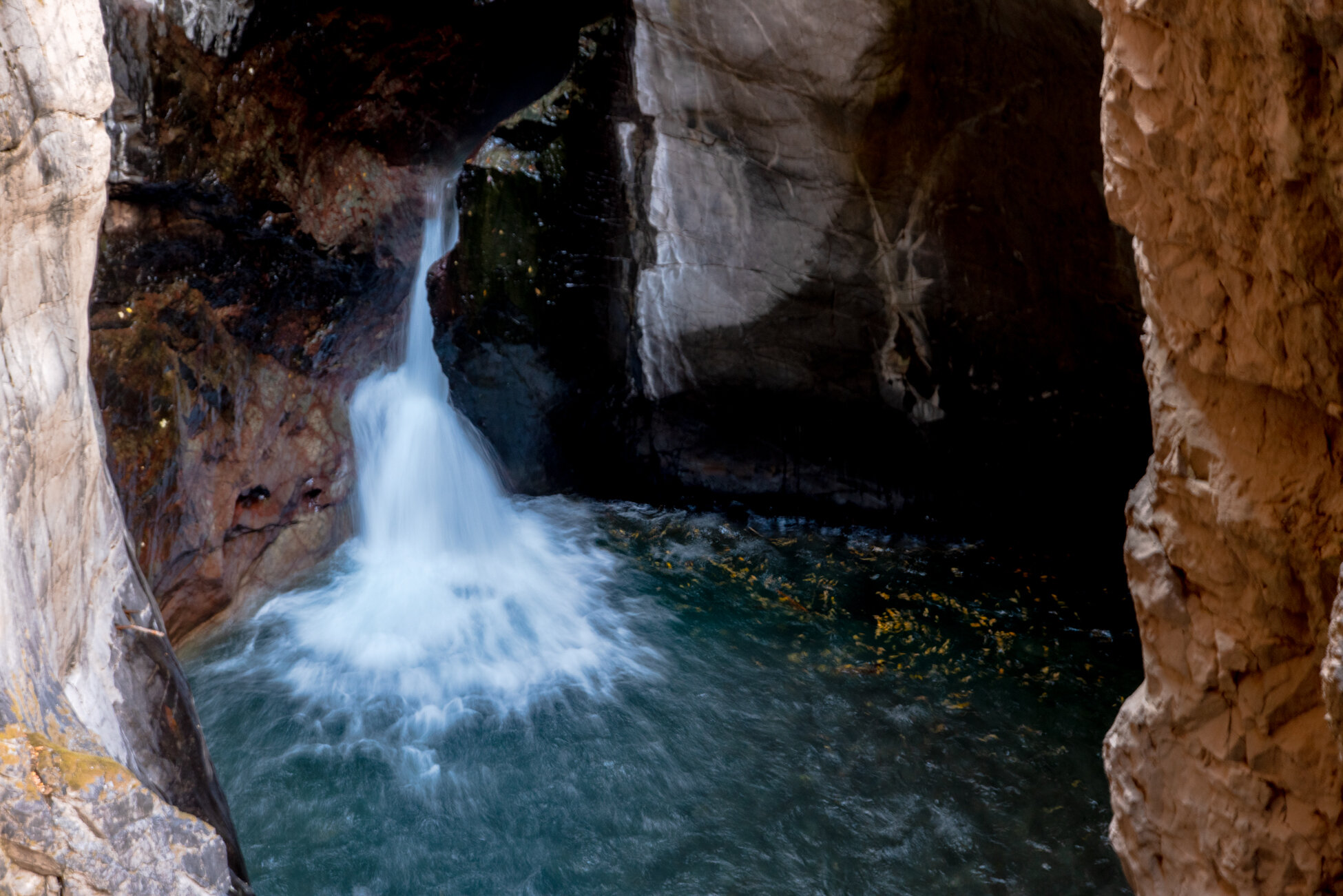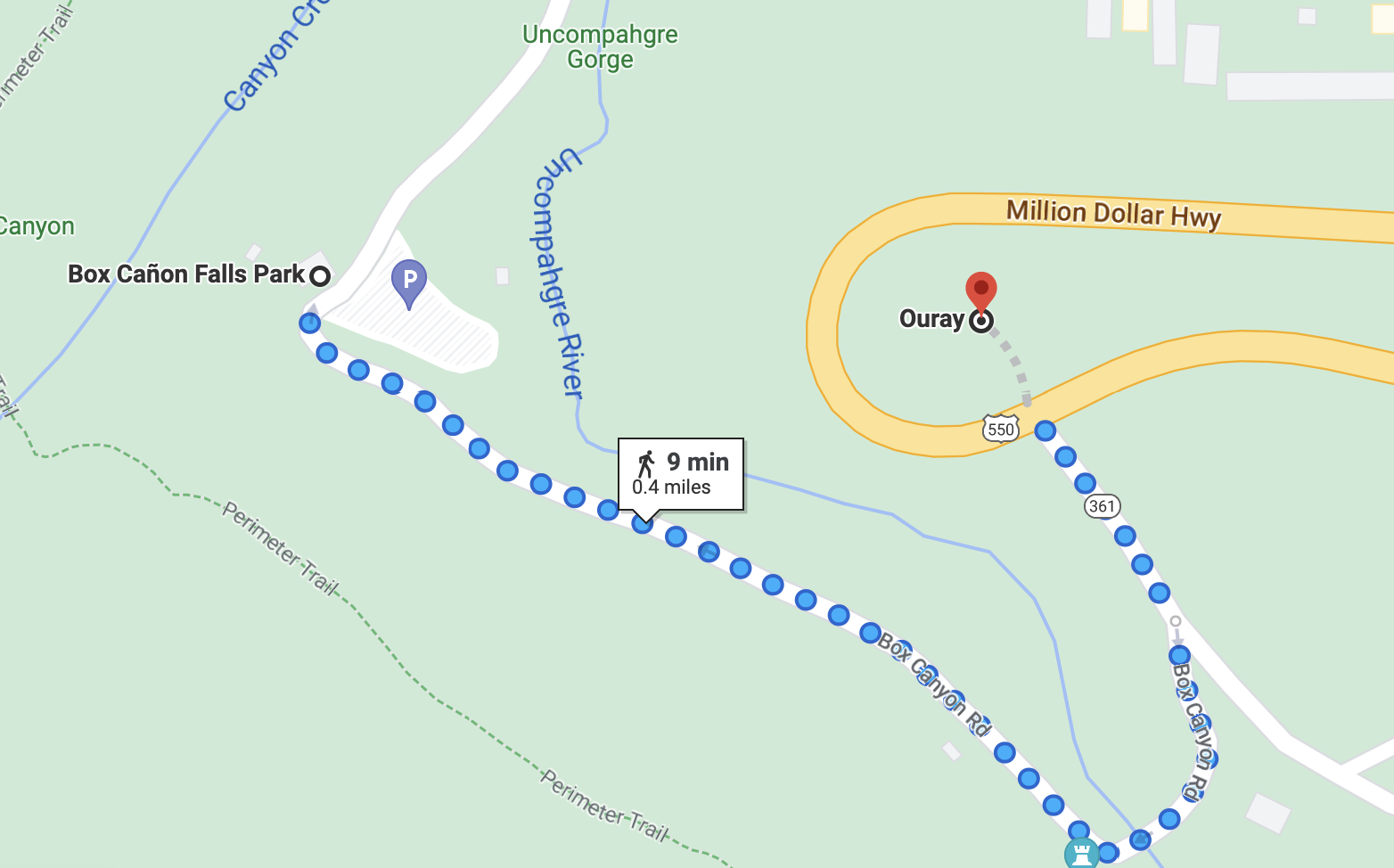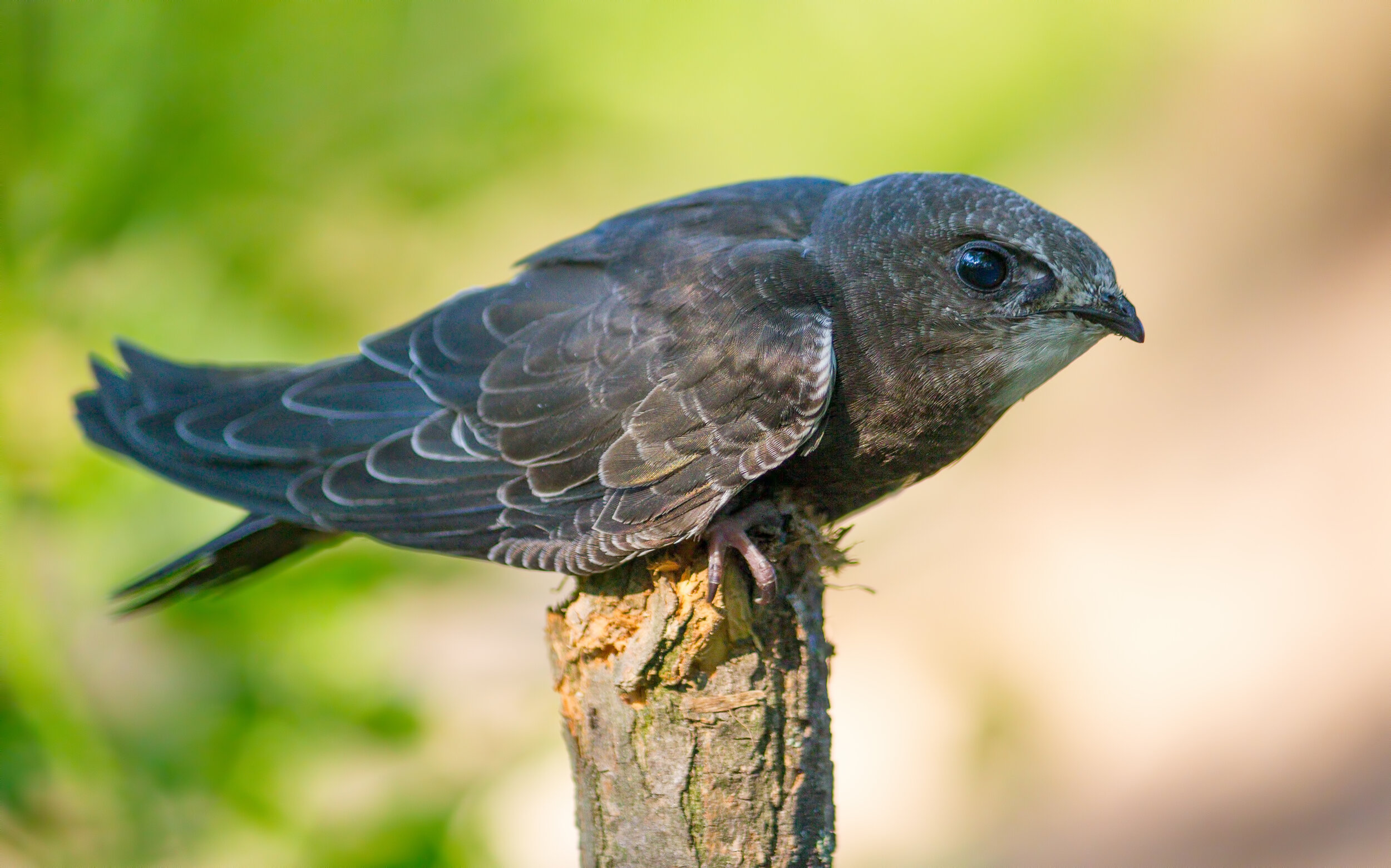
Enjoy an easy 500 foot walk into the thundering waterfalls! With access to the high bridge, perimeter trail, and nature center. The Box Cañon Falls is a must see in Ouray, Colorado!
Box Cañon Falls Park & Nature Center
Box Cañon Falls is the culmination of Canyon Creek before it joins the Uncompahgre River near Ouray. The water plummets through a very narrow quartzite gorge with power and force.
*No dogs are allowed in the park
Office Phone 970.325.7080
Visitor Center Hours
9 am - 5 pm | May
8 am - 8 pm | Memorial Day - Labor Day
9 am - 5 pm | October
Closed | November - March
$5 | 4- 17 Years Old
$7 | 18 - 62 Years Old
$6 | 62 - 74 Years Old
Free | 75 + and 3 and under
Pricing
The Box Cañon Falls Park remains open all year round. We do close the Box Canyon Road in the winter time. You can still park at the OHV Staging area or on 3rd Avenue and walk the road to get to the park.
*Winter weather does create icy and slippery conditions, so please be cautious when exploring.
EXPLORING IN THE WINTER
How to Get to Box Cañon Falls
Coming from the north:
Travel through town on Main Street heading south. You will make a long left hand turn past the OHV Staging area to your left. There is a sign pointing you to turn right off the highway onto County Road 361 (Camp Bird Road). Stay right at the split, then follow the Box Cañon Road down to the parking area.
Coming from the south:
Before you get into town, you will turn left at the OHV Staging area onto County Road 361 (Camp Bird Road). Stay right at the split, then follow the Box Cañon Road down to the parking area.
*This road is one-way traffic only. The entrance is the road off County Road 361
Check out the falls.
Enjoy 50 seconds of the Box Cañon Falls experience. This attraction is easily accessible from town either walking or driving and family friendly. No dogs allowed in the park.
Box Cañon Falls, Ouray's own wonder of the world, is the culmination of Canyon Creek narrowing and spilling thousands of gallons a minute of water over the falls. At this most spectacular geological formation, the 285-foot waterfall plummets into a narrow quartzite canyon. The narrow rock walls tower over the falls by nearly 100 feet!
The park is on CR361 - off Highway 550 just south of Ouray.
Hiking Trails
There are three interpretive trails in the park that range from easy to moderately difficult. The park offers picnicking, hiking, and unforgettable sightseeing. Our visitor center houses interpretive exhibits, describing the geology, wildlife, and history of the area.
The Falls Trail is a mostly level, easy, 500-foot walk into the canyon.
The High Bridge Trail takes you up 200 feet in a half-mile round trip hike. Along the trail are beautiful views of the town and the high peaks of the Amphitheater Cirque.
The Native Plant Loop is a short, easy stroll with river sounds, trees and shrubs, and plant markers to help identify the local flora of the Box Cañon. This is the only trail within the park that does not have steps.
The Black Swifts
The Box Cañon is recognized by the National Audubon Society as a birding hot spot. Home to a significant colony of Black Swifts, the Box Cañon is frequented by ornithologists, bird enthusiasts, and nature lovers. Many birders come to the Box Cañon Falls to observe the Black Swifts and add this species to their ‘life lists’.
Black Swifts (Cypseloides niger) are the largest of the swifts that migrate to North America. The Black Swift colony typically arrives at the Box Cañon Falls in early June. Nests are rebuilt of mud and grass and the female bird typically lays only one egg during the breeding season. The chicks are hatched after 24-25 days. Parents both care for the young birds.
Once the bird is old enough to take flight they leave the nest for autumn migration to the rainforest in Brazil, a distance of more than 4,300 miles! This usually takes place in early September, about the time of the first frost. The chick develops strength by hanging on the edge of the nest and flapping its wings like a hummingbird. This is the only exercise they have before migration to the southern hemisphere.
The Box Cañon Falls has been the location of important research on the Black Swifts. Black Swifts are protected under the Federal Migratory Bird Treaty Act of 1918.
Whether actively seeking a specific bird species, or simply sitting in the beautiful scenery, listening to bird songs, watching the birds and chipmunks, the natural amenities of the Box Cañon Park are always enjoyable.
Fun Black Swift Facts
1. This little-known and elusive North American bird makes Box Canyon Falls in Ouray its home. It is one of the easiest places to see this special species.
2. The swifts breed at waterfalls and caves scattered across the landscape from Alberta and British Columbia, Canada, down through the western US and into Mexico.
3. They feed exclusively on aerial insects and ballooning spiders. In Colorado, they build a cup nest out of moss, and only lay a single egg annually. The nesting period is protracted, lasting 3-1/2 to 4 months. The single chick is believed to immediately start its long migration south as soon as it leaves the nest.
4. They are long-distance migrants whose non-breeding (wintering) grounds are in the State of Amazonas in Brazil. This fact discovered by researchers in Colorado in 2009-2010. The birds flew in the fall non-stop from breeding sites in Colorado, 4,350 miles at an average speed of ~240 miles/day, and repeated the trip back to the breeding grounds in Colorado the following spring.
5. It was recently discovered that Black Swifts on the wintering grounds remain airborne up to more than 99% of the time during their 8-month non-breeding period in Brazil.
6. These swifts are a very long-lived bird, especially for birds that average 1.5 ounces in weight. The oldest Black Swifts documented are 18 years old, and studies are ongoing, so we may find that they live even longer.
7. So, if these swifts make a round trip of ~8,700 miles annually, and can live up to 18 years of age, over their lifetime they can travel over 157,000 miles. That is equal to flying around the earth 6 times, or 2/3 of the way to the moon during their lifetime. And that doesn’t include the countless miles they fly while nearly continuously on the wing on the non-breeding grounds.
8. The Black Swift is listed as “Vulnerable” by the Global International Union for Conservation of Nature’s Red List and is listed as “Endangered” in Canada. Like all aerial insectivores (birds that feed on insects in the air column), Black Swift populations are decreasing. The entire United States and Canadian population is estimated at around 74,000 individuals and has declined by 94% from 1970 to 2014.





